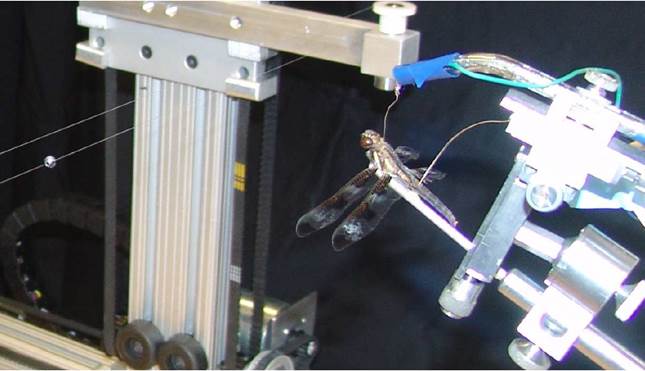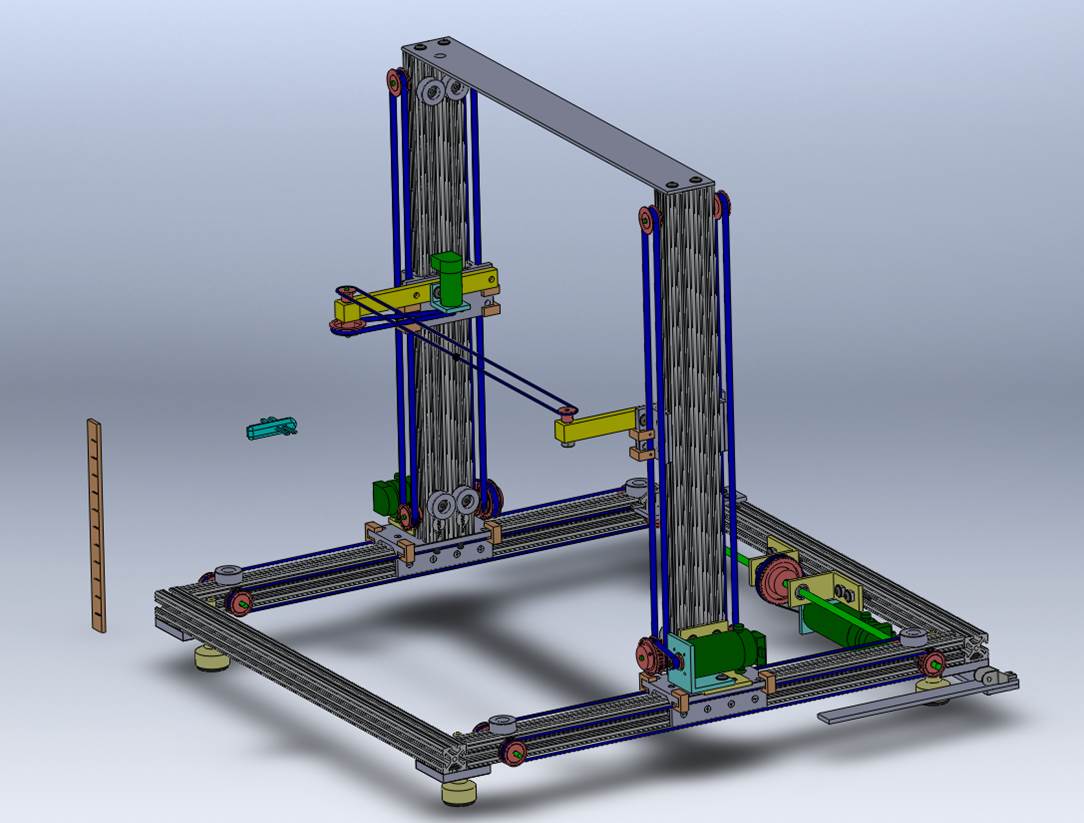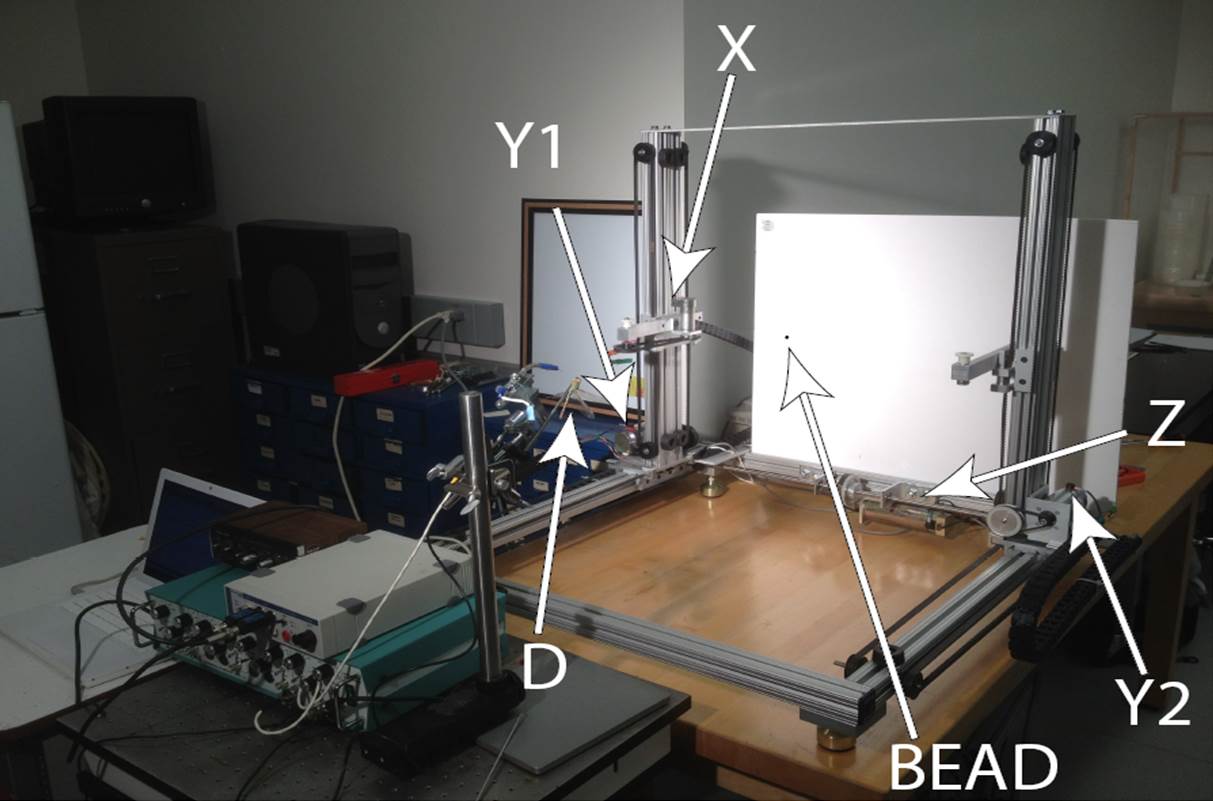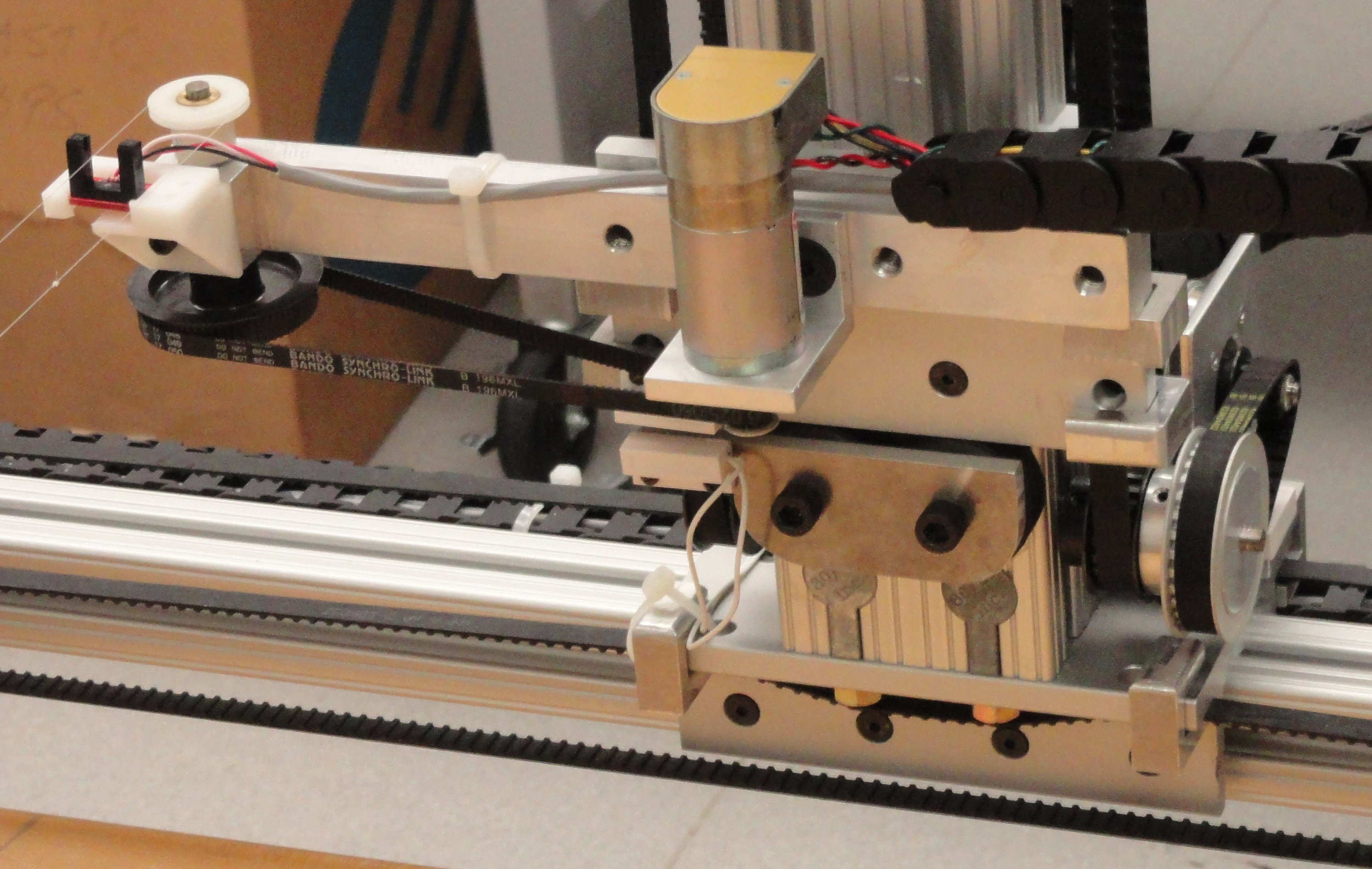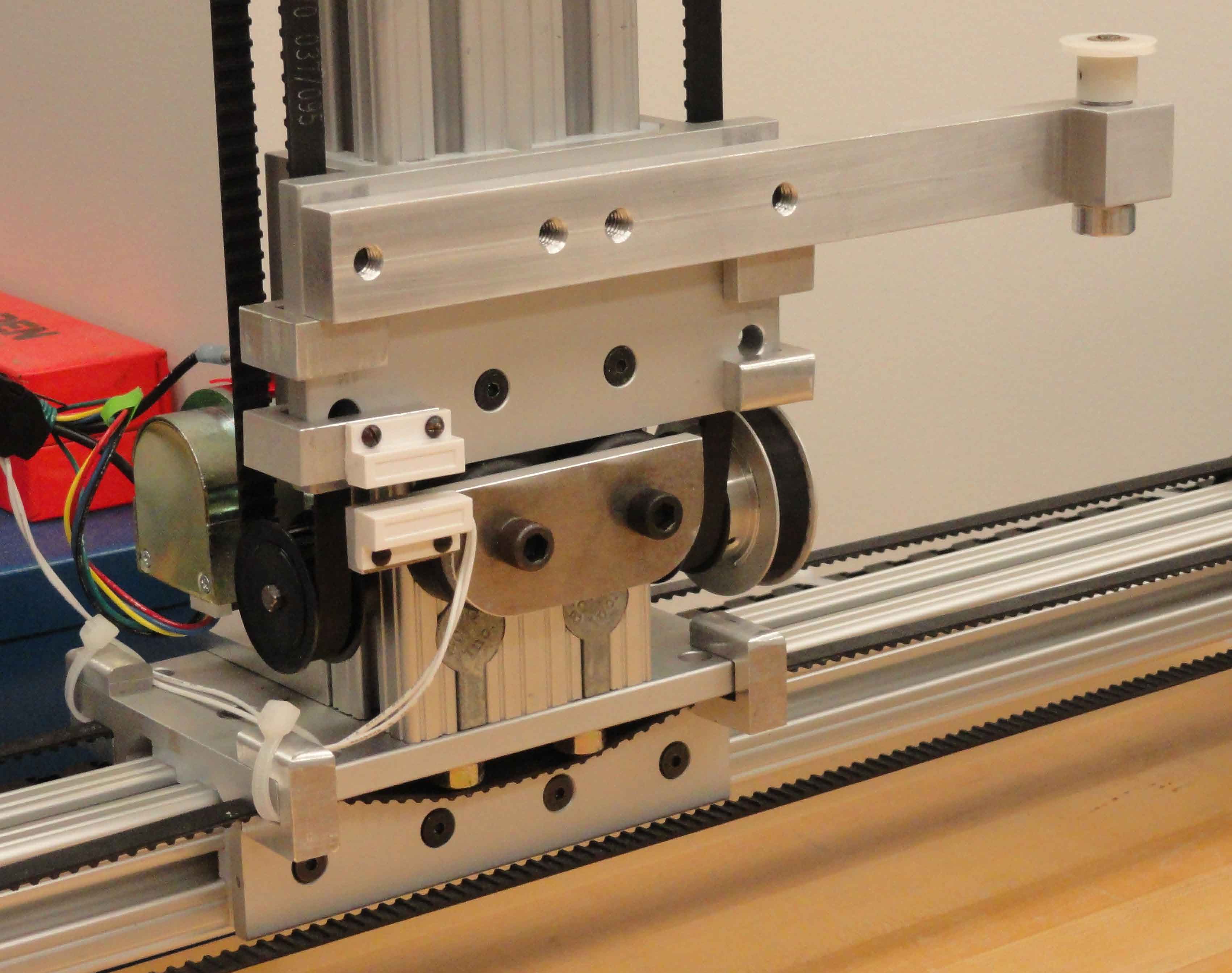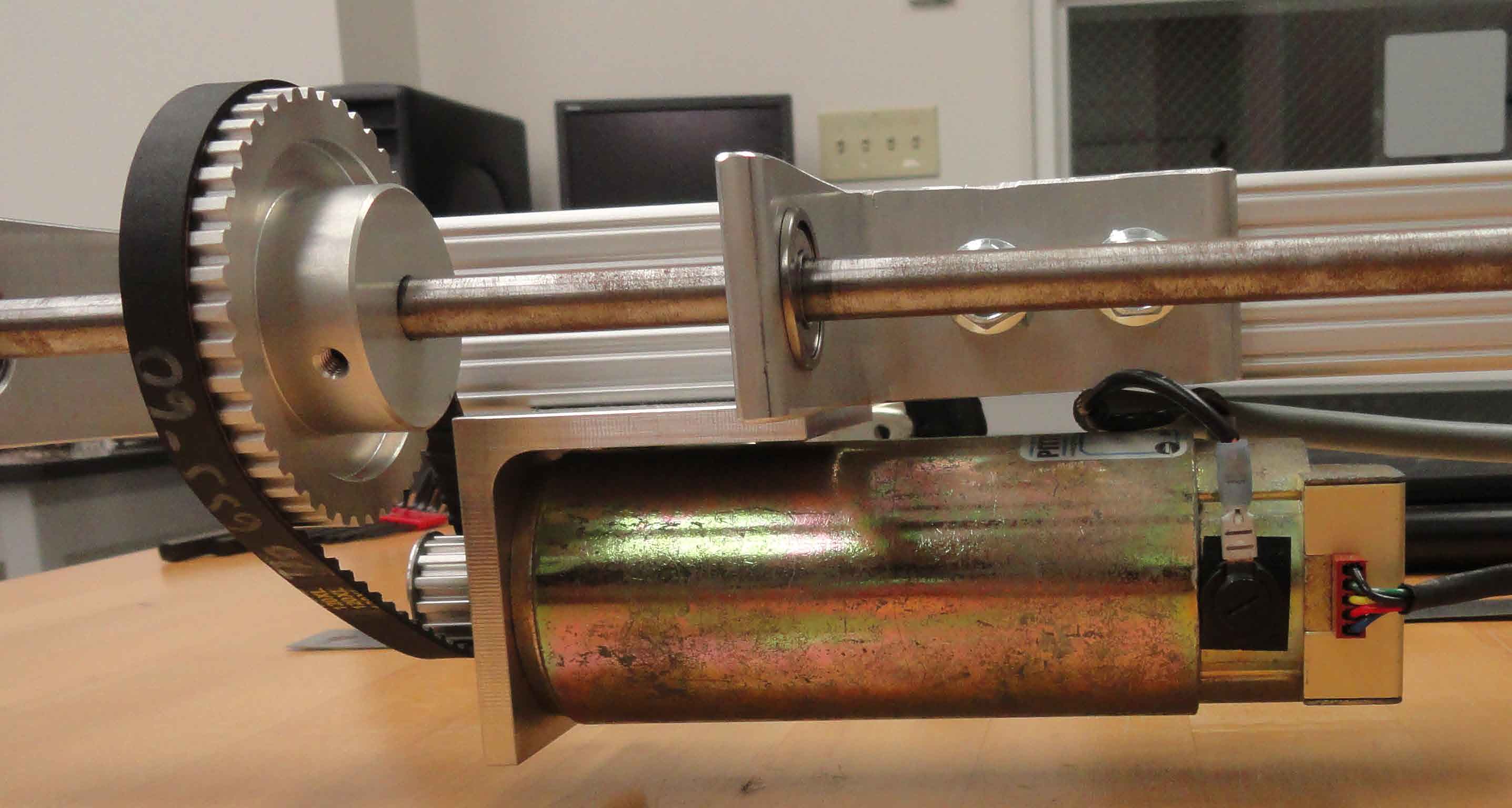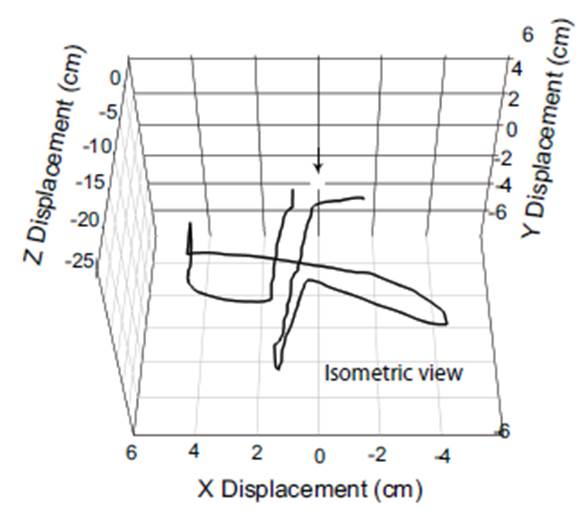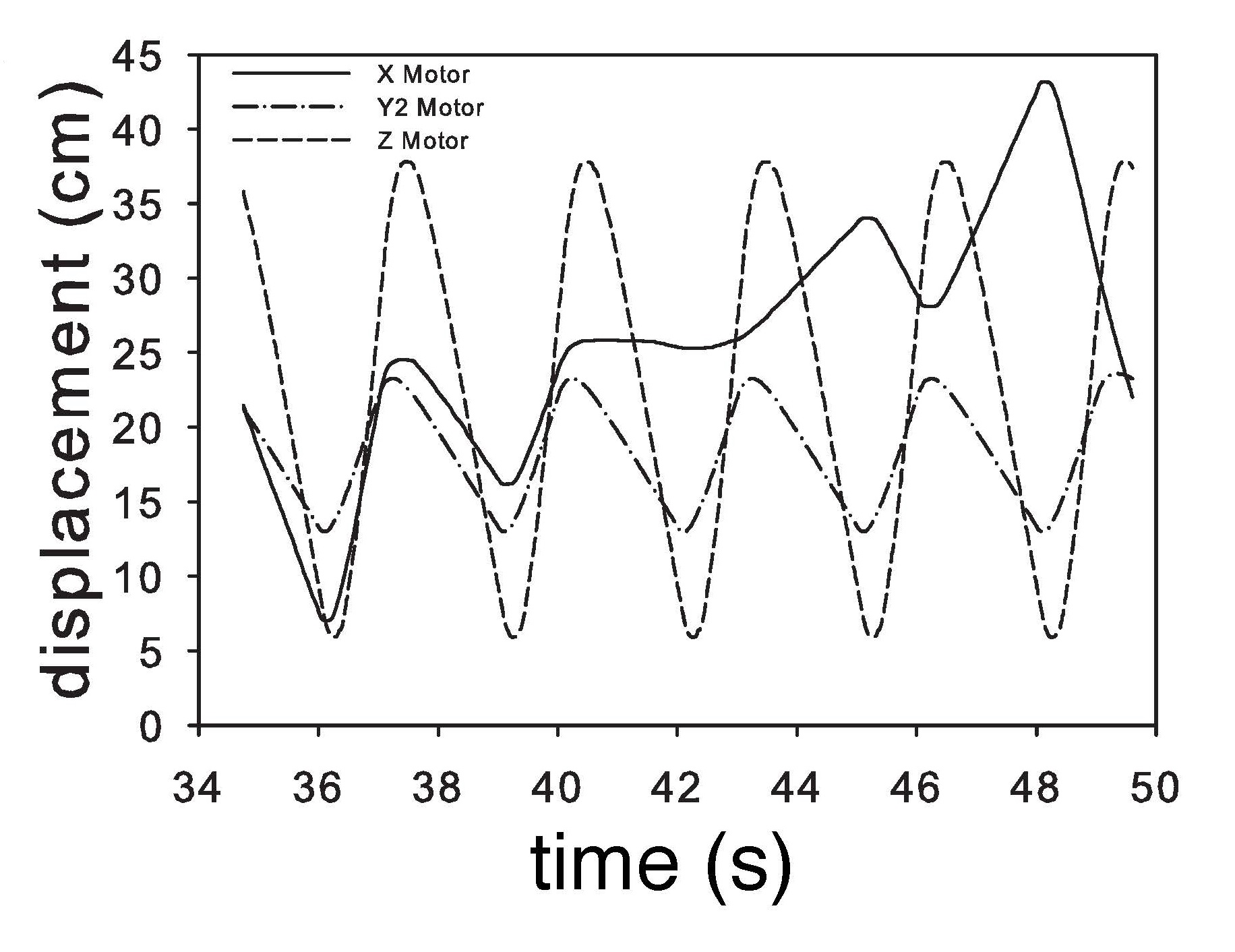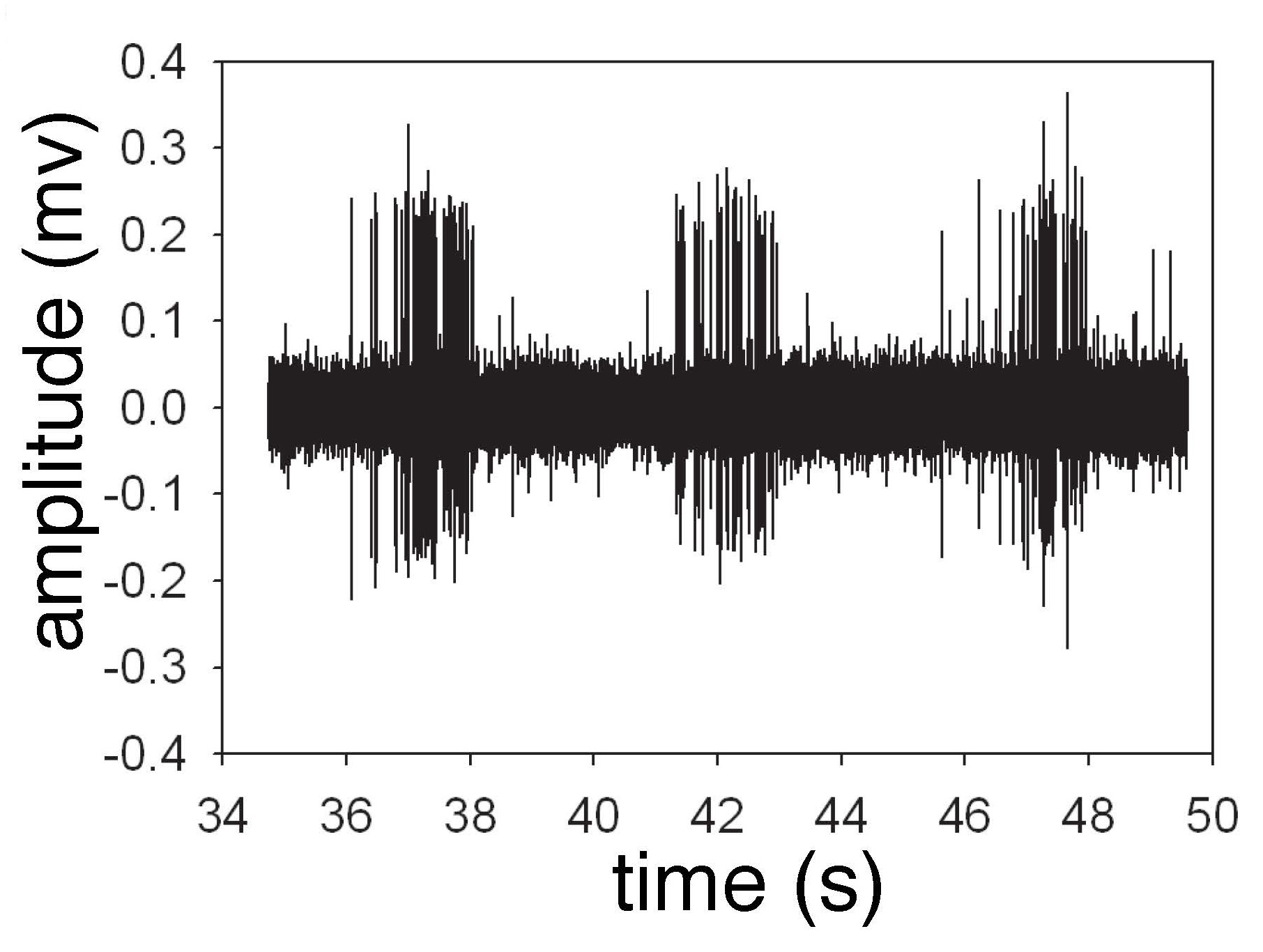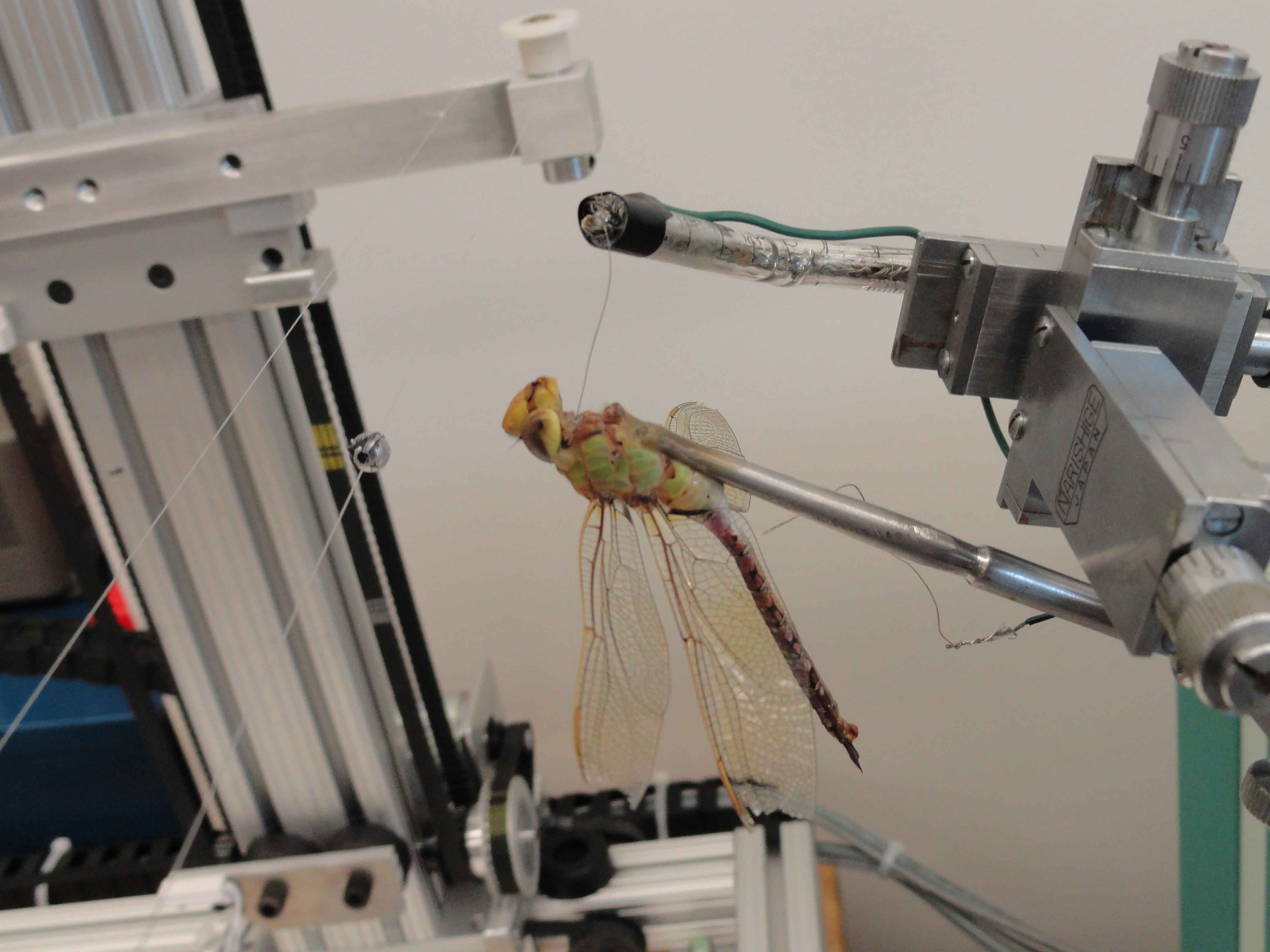
3D Flying Prey Simulator
Collaborating with a team of engineers and biologists, my colleagues and I designed, fabricated, and programmed a machine to aid in the investigation of the neuronal control of flying prey interception in dragonflies. The task involved constructing an apparatus to simulate the complex motions of a flying insect. In this fashion, the 3D motion device can mimic a flying insect by moving a small bead accurately up to speeds of 1 m/s in any direction.
Dragonflies are efficient aerial predators that can intercept and capture small insects in flight. The stimulus device is still in use to investigate the way in which dragonfly neurons encode information about object movement in 3D. In a broader context, this work could lead to the development of more effective guidance mechanisms for military or civilian use.
